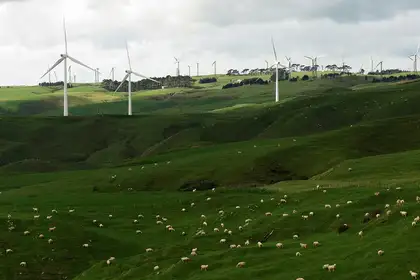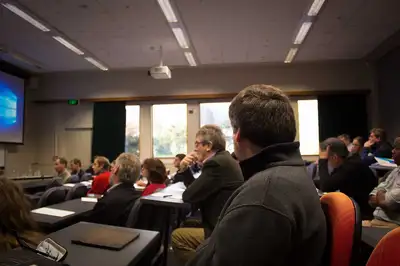
Tuapaka Farm.
Scientists, farmers, businesses and regulators from across the region gathered at Massey University earlier this month to discuss the research being undertaken at the University’s Tuapaka Farm.
The symposium’s two main questions were: ‘how can we get the most out of our hill country farms whilst reducing the environmental impact of grazing animals?’; and ‘what are the most pressing issues around sediment and nutrient loss from hill country farms and how do we solve them?’
Attendees had the chance to hear from a number of staff and students on key findings in hill country farming. A key message from the day was that soil type has a dramatic effect on its ability to retain nutrients, and that more research in this area could provide the data to do things more efficiently.
The symposium was organised by Dr Lucy Burkitt, of the Institute of Agriculture and Environment, Associate Professor Rebecca Hickson of the Institute of Veterinary, Animal and Biomedical Sciences (also a scientist in residence at Tuapaka), and general manager of the Massey Agricultural Experiment Stations Mr Allan Still.

Presentations on areas of hill country interest.
At a glance
During her presentation, Dr Burkitt discussed work on stream water quality monitoring from Tuapaka, Massey’s hill country beef and sheep research farm.
“We need to pick up trends and figure out how to reduce impacts within our control, other than rain, as we can’t control climate. Thinking of how we improve management and nutrient loss we need to know what’s causing what by looking at a whole range of soil types and different slopes of land,” said Dr Burkitt.
Dr Burkitt said that Massey had just received funding for two nitrate sensors. It is similar to the one they recently deployed in the Manawatū River, and will provide information directly to their research every 15 minutes, compared to the current time of two weeks. The data will be used to understand how nitrate concentrations vary in relation to flow and other factors in the catchment.
Masters in Soil Science graduate Petra Fransen, now a Land Management Advisor at Greater Wellington Regional Council, spoke about her project on selecting cattle feeding areas to reduce sediment and nutrient surface runoff. Also discussed was the impact of dissolved organic carbon in hill country on nitrate leaching presented by PhD student Grace Chibuike.
In the second half of the symposium, Associate Professor Rebecca Hickson presented research examining efficiency and longevity of beef breeding cows, and yard weaning of beef calves. Associate Professor Hickson said that the work highlighted the importance of cow size in determining herd production efficiency, reporting that it was hard to increase calf weaning weight sufficiently to counteract the greater maintenance requirements of a heavy breeding cow.
She also said that yard weaning offered neither growth nor temperament improvements in the two cohorts of beef calves tested.
Sheep scientist Dr Lydia Cranston presented on the use of alternative herbages on hill country for early weaning of lambs. Her work found weaning lambs early (at 16 kg) onto a plantain/clover mix allowed their dams to gain more weight and condition by the time of conventional weaning. Furthermore, when grass availability was limited, lambs that were weaned early onto a plantain/clover mix had greater growth rates than lambs which remained with their dams on grass.
The symposium represents just a small insight into the many projects being undertaken in the area.